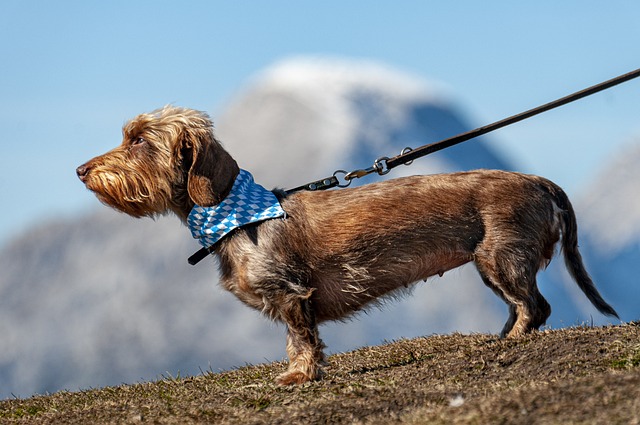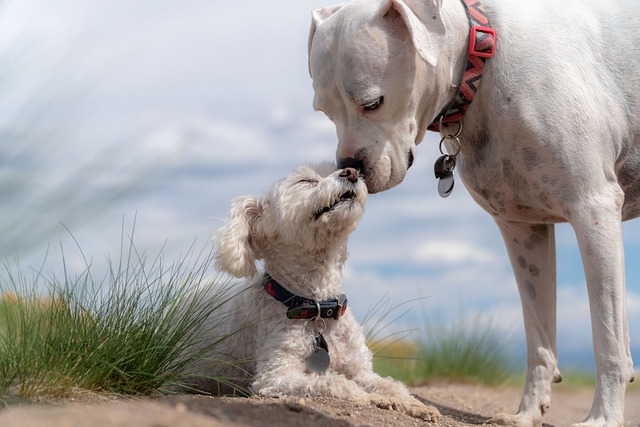Leash training is an essential skill for every dog owner. It can help you keep your dog safe, teach them good manners, and make your walks more enjoyable. However, leash training can also be challenging, especially if your dog is easily distracted, pulls hard, or barks at everything. That’s why we have compiled some tips and tricks to help you leash-train your dog in a positive and effective way.
What is leash training?
Leash training is the process of teaching your dog to walk calmly and politely on a leash, without pulling, lunging, or barking. Leash training is not only beneficial for your dog’s safety and well-being, but also for your own comfort and convenience. A well-trained dog will be easier to control and manage, and will also be more welcome in public places.
Why is leash training important?
Leash training is important for several reasons:
- It prevents your dog from running into traffic, getting lost, or getting into trouble with other animals or people.
- It helps your dog learn to focus on you and follow your cues, which can improve your bond and communication.
- It teaches your dog to behave calmly and confidently in different situations and environments, which can reduce their stress and anxiety.
- It makes your walks more fun and relaxing, as you don’t have to constantly correct or restrain your dog.
How to leash train your dog?
Leash training your dog may take some time and patience, but it is not impossible. Here are some steps you can follow to leash train your dog:
- Choose the right equipment. You will need a collar or harness that fits your dog comfortably and securely. You will also need a leash that is long enough to allow some slack, but not too long to get tangled or trip your dog. You may also want to consider a no-pull harness, a head collar, or a slip lead, which can help you control your dog’s pulling. However, you should always consult your veterinarian or a professional trainer before using any of these devices, as they may not be suitable for every dog. You will also need some treats, toys, or praise to reward your dog for good behavior.
- Introduce the leash gradually. Some dogs may be afraid or uncomfortable with the leash at first, so you need to make them associate it with positive things. Start by letting your dog sniff and explore the leash, and reward them with treats or praise. Attach the leash to their collar or harness, and let them drag it around the house or yard, while you supervise them. Again, reward them for being calm and relaxed. Repeat this process until your dog is comfortable with the leash.
- Start with short and easy walks. Once your dog is used to the leash, you can start taking them for short walks around your neighborhood or a familiar area. Keep the leash loose and relaxed, and let your dog sniff and explore, as long as they don’t pull or wander too far. If they do, stop and wait for them to come back to you, or gently guide them back to your side. Reward them with treats or praise whenever they walk near you or look at you. Gradually increase the duration and distance of your walks, and introduce new places and distractions, as your dog gets more confident and obedient.
- Teach your dog to walk by your side. The ideal position for your dog to walk on a leash is by your side, with their shoulders aligned with your leg. This way, you can communicate with your dog more easily, and prevent them from pulling or darting in different directions. To teach your dog to walk by your side, you can use a cue word, such as “heel” or “with me”, and reward them with treats or praise whenever they are in the correct position. You can also change directions or speeds frequently, and reward your dog for following you. If your dog tries to pull ahead, stop and wait for them to come back to you, or turn around and walk in the opposite direction. Do not yank or jerk the leash, as this can hurt or scare your dog, and damage your relationship.
- Be consistent and patient. Leash training your dog may take some time and practice, depending on your dog’s age, personality, and previous experiences. Do not expect your dog to be perfect right away, and do not get frustrated or angry if they make mistakes. Instead, be consistent and patient with your training, and always use positive methods to reward your dog. Remember, every dog is different, and some learn faster or slower than others. The key is to be consistent and patient, and enjoy the process of leash training your dog.
Conclusion
Leash training your dog is an important skill that can benefit both you and your dog. It can help you keep your dog safe, teach them good manners, and make your walks more enjoyable. Leash training your dog may take some time and practice, but it is not impossible. By following the steps above, you can leash train your dog in a positive and effective way. If you need more help or guidance, you can always consult a professional dog trainer or a veterinarian. Happy leash training.
CODE: 87634




